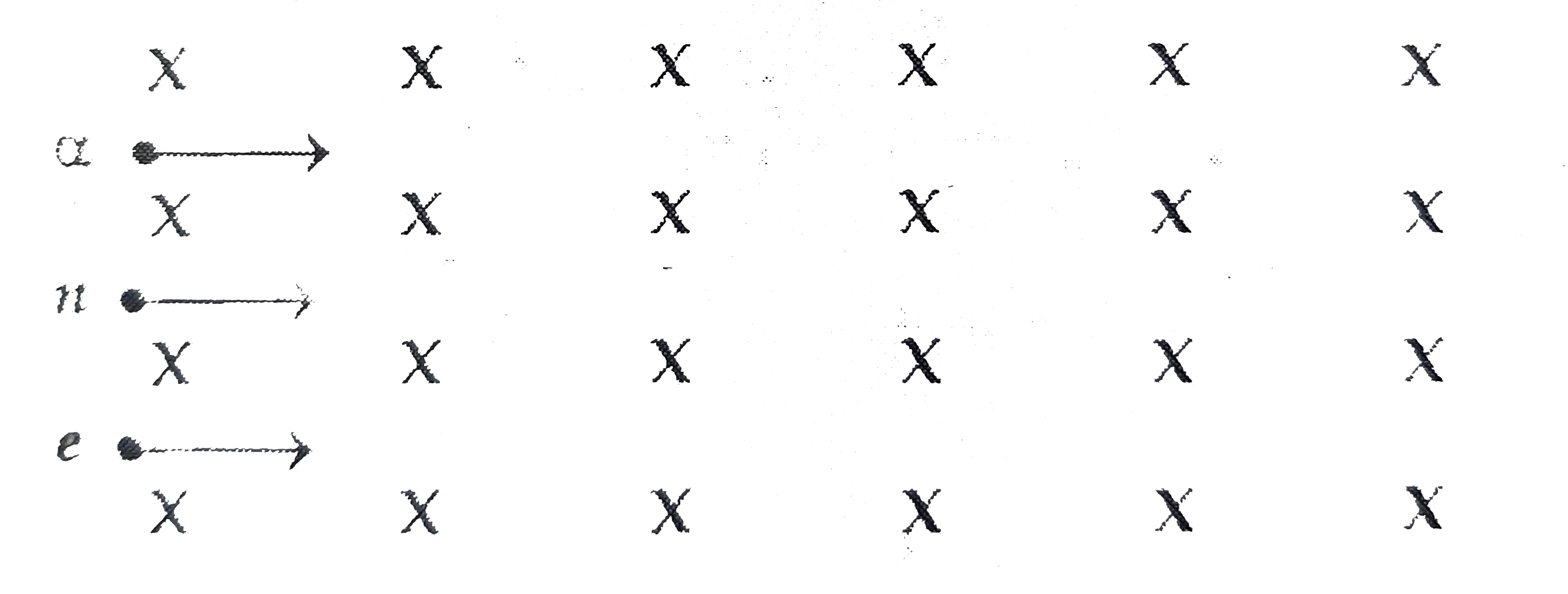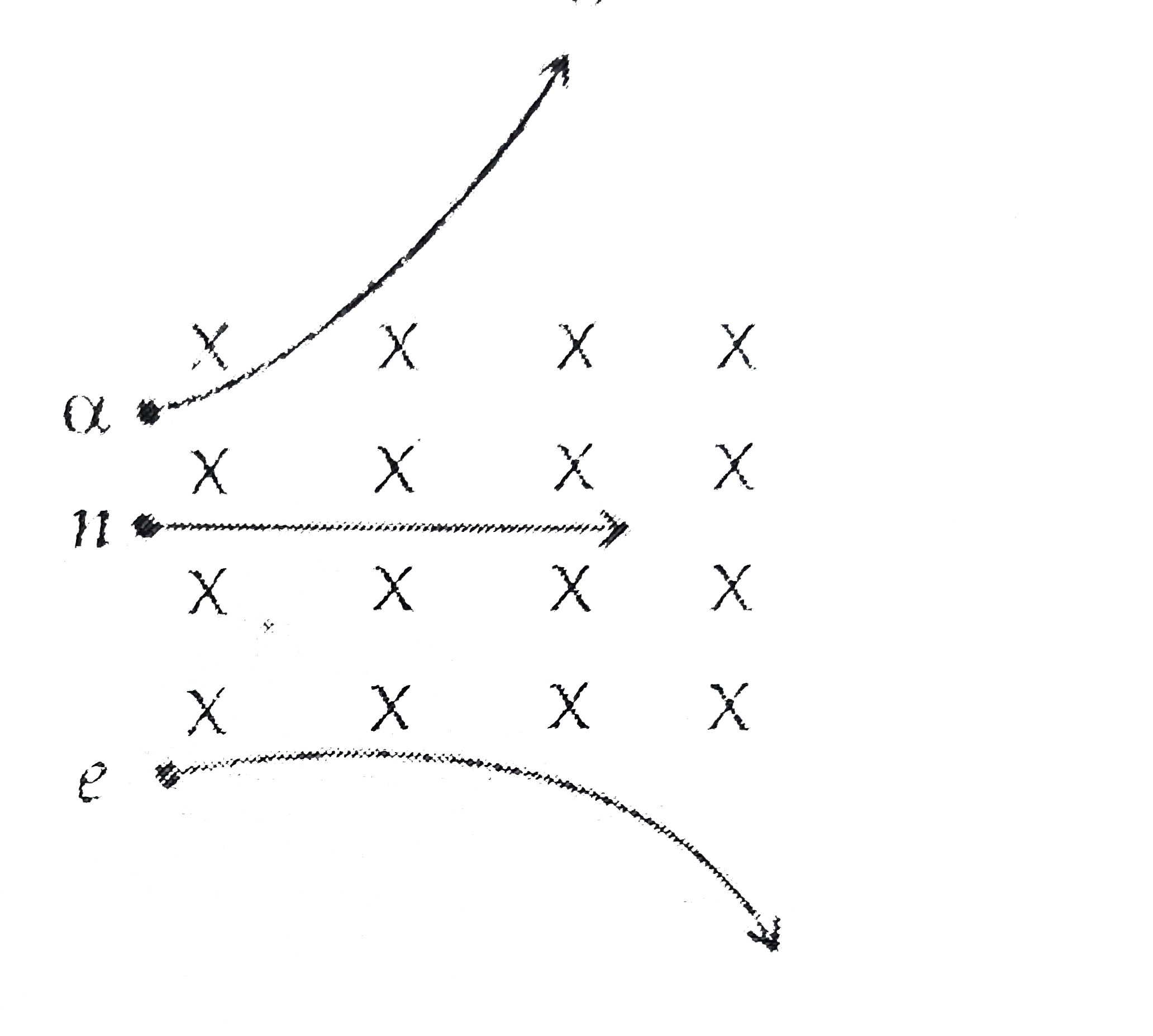(a) Write the expression for the magnetic force acting on a k charged particle moving with velocity v in the presence of magnetic field B .
(b) A neutron an electron and an alpha particel moving with equal velocities enter a uniform magnetic field going into the plane of the paper as shown. Trace their paths in the field and justify your answer .

(a) →F=q(→v×→B)⇒f=qvB sin θ where θ is angle between velocity and magnetic field .

(b) Force on ∝ particle will be
F=2e.,vB(θ=90∘)=2evB
This force will make the ∝ particle move on a circular path
As neutron does not have any charge so it will go undeviated .
Electron has negative charge so force will be opposite to that of ∝ particel and given by F = ev b
Topper's Solved these Questions
- BOOK - XII BOARDS PREVIOUS YEARCHAPTER - XII BOARDSEXERCISE - Section-D18videos
XII BOARDS
- BOOK - XII BOARDS PREVIOUS YEARCHAPTER - XII BOARDSEXERCISE - Section-E18videos
XII BOARDS
- BOOK - XII BOARDS PREVIOUS YEARCHAPTER - XII BOARDSEXERCISE - Section -B12videos
XII BOARDS
- BOOK - XII BOARDS PREVIOUS YEARCHAPTER - SAMPLE PAPER 2019EXERCISE - SECTION D6videos
SAMPLE PAPER 2019
Similar Questions
Write the expression for the magnetic force acting on a, charged particle moving with velocity v in the presence of magnetic field B.
View SolutionA neutron , an electron and an alpha particle moving with equal velocities, enter a uniform magnetic field going into the plane of the paper as shown in fig. Trace their paths in the field and justify your answer.
 View Solution
View Solution
Knowledge Check
- Question 1 - Select One
A charged particle is moving with velocity Vin magnetic field
AIts momentum changes but total energy remains sameBboth momentum and total energy remains sameCboth momentum and total energy changeDtotal energy changes but momentum remains the same - Question 2 - Select One
The force on a charged particle moving with a velocity →v in a magnetic field →B is :
Aperpendicular to both →v and →BBmaximum, if ovrseov perpendicular to →BCmaximum, if ovrseov parallel to →BDzero, if ovrseov is parallel to →B - Question 3 - Select One
The force on a charged particle moving with a velocity →v in a magnetic field →B is :
Aperpendicular to both →v and →BBmaximum, if ovrseov perpendicular to →BCmaximum, if ovrseov parallel to →BDzero, if ovrseov is parallel to →B
Write the expression in vector form for the magnetic force →F acting on a charged particle moving with velocity →v in the presence of a magnetic field →B. What is the direction of the magnetic force ?
View SolutionWhat is the direction of the force acting on a charged. Particle q moving with a velocity →v in a uniform magnetic field →B ?
View SolutionWhat is the direction of the force acting on a charged particle q, moving with a velocity →v a uniform magnetic field →B ?
View SolutionWrite the expression for the magnetic force →F acting on a charged particle q moving with velocity →v in the presence of the magnetic field →B in a vector form.
Show that no work is done and no change in the magnitude of the velocity of the particle is produced by this force.View SolutionWrite the expression for Lorentz magnetic force on a particle of charges 'q' moving with velocity →v in a magnetic field →B.
View Solution

